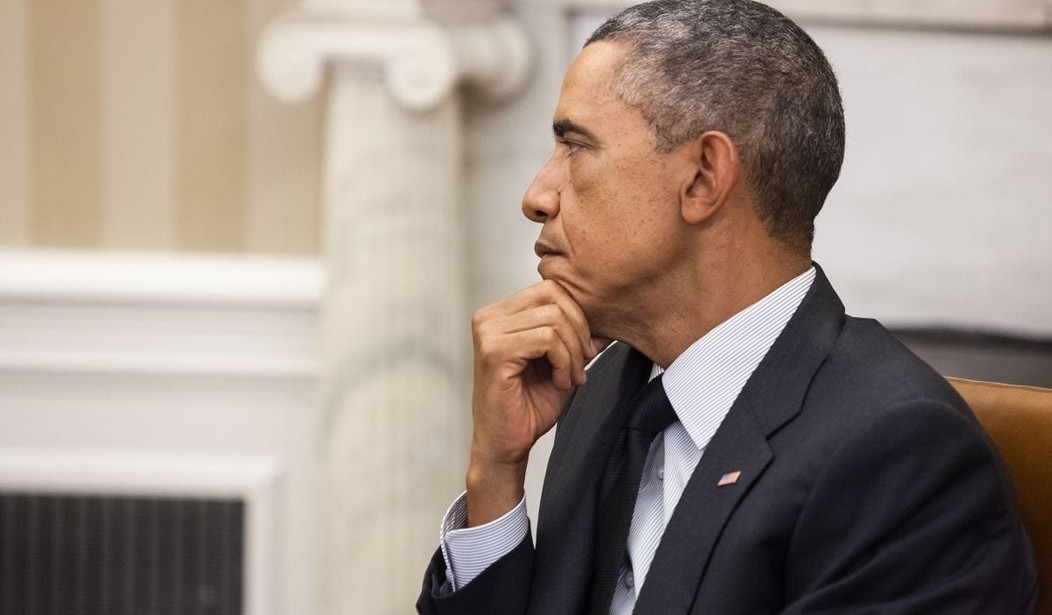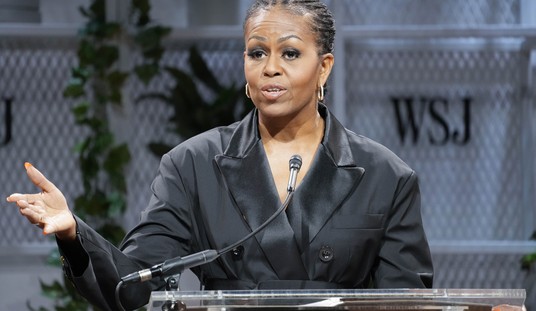As special counsel Robert Mueller reportedly targets all communications between President Donald Trump and his senior campaign team with a grand jury subpoena, Trump fired off the following tweet Monday morning:
Why did the Obama Administration start an investigation into the Trump Campaign (with zero proof of wrongdoing) long before the Election in November? Wanted to discredit so Crooked H would win. Unprecedented. Bigger than Watergate! Plus, Obama did NOTHING about Russian meddling.
— Donald J. Trump (@realDonaldTrump) March 5, 2018
This is reminiscent of Trump’s tweet in which he accused the Obama administration of “wire tapping” Trump Tower. That is a plausible accusation, as National Security Agency Director Mike Rogers — who had submitted a FISA court review of suspicious spying on American citizens — met with Trump at Trump Tower days after his election. The very next day, the president-elect and his team vacated Trump Tower to Bedminster, New Jersey.
Now, as Mueller heats up his investigation on the heels of released memos that question the validity of a Russia-Trump collusion, Trump is once again pointing the finger at what he thinks is the real scandal — the Obama administration spying on a political opponent to keep him out of the White House.
Could there be any truth to Trump’s claim that the Obama administration started an investigation with “zero proof of wrongdoing” before the November election? Let’s look at some facts.
As we can see from a timeline compiled by Sharyl Attkisson, the FBI began a counterintelligence investigation in July of 2016 based on the DNC email “hack,” information from British spy Christopher Steele, and suspicious activity involving Carter Page (whom the FBI had been investigating separately with no evidence of involvement in collusion between Russia and Trump) and George Papadopoulos.
FBI Director James Comey violated procedure at this time by not informing congressional oversight he was investigating Trump, a significant detail that came out through questioning by Rep. Elise Stefanik at the Comey hearing. Why did he inform Obama and not congressional oversight? Because the matter was “too sensitive,” Comey answered. Yet, it is exactly because matters are sensitive that they are to be reported to congressional oversight.
We also know that opposition research, which eventually became the Steele dossier filled with unconfirmed and false information, was used as a basis to investigate Trump. In an interview with the Senate Judiciary Committee, Glenn Simpson of Fusion GPS — the firm that hired Steele for opposition research paid for by the Clinton campaign — said it was Steele’s idea to contact the FBI in June or July 2016 with information about Trump.
Simpson said the reason Steele contacted the FBI was because he suspected Trump of colluding with the Russians in the hack of the DNC computers. In response to a question by a committee member about whether Steele thought a crime was in progress, Simpson called it “espionage.” “They were hacking into the computers of Democrats and think tanks,” he said. “That’s a crime.”
Despite the claim, he didn’t offer any proof that Trump colluded with the Russians in hacking DNC computers.
At this point, there is still no solid ground for starting an investigation. Even the “hacking” of the DNC computers by the Russians is a narrative full of holes, despite law enforcement claims to the contrary. An article by Patrick Lawrence published in August 2017 at The Nation details why we can’t say for certain that the DNC was hacked by the Russians, much less that Trump was somehow involved:
Forensic investigators, intelligence analysts, system designers, program architects, and computer scientists of long experience and strongly credentialed are now producing evidence disproving the official version of key events last year. Their work is intricate and continues at a kinetic pace as we speak. But its certain results so far are two, simply stated, and freighted with implications:
- There was no hack of the Democratic National Committee’s system on July 5 last year — not by the Russians, not by anyone else. Hard science now demonstrates it was a leak — a download executed locally with a memory key or a similarly portable data-storage device. In short, it was an inside job by someone with access to the DNC’s system. This casts serious doubt on the initial “hack,” as alleged, that led to the very consequential publication of a large store of documents on WikiLeaks last summer.
- Forensic investigations of documents made public two weeks prior to the July 5 leak by the person or entity known as Guccifer 2.0 show that they were fraudulent: Before Guccifer posted them they were adulterated by cutting and pasting them into a blank template that had Russian as its default language. Guccifer took responsibility on June 15 for an intrusion the DNC reported on June 14 and professed to be a WikiLeaks source — claims essential to the official narrative implicating Russia in what was soon cast as an extensive hacking operation. To put the point simply, forensic science now devastates this narrative.
The article was panned by the DNC as a conspiracy theory, but the facts have not been countered with hard evidence, and the editors of The Nation have defended publishing the article after extensive review. Even if you doubt Lawrence’s argument that the Russians didn’t hack the DNC, there is still no evidence that Trump had anything to do with the operation.
With the email hack and Steele’s opposition research out of the way as no basis for an investigation, we’re left with a couple of meetings with Russians. Jonathan Turley, professor of Public Interest Law at George Washington, handles this expertly, casting doubt on the entire Trump-Russia theory (and a theory is all it is and ever was):
After more than a year of intensive investigation by both the special counsel and multiple congressional committees, there is no direct evidence of Trump colluding with Russians. After roughly 100 criminal counts against 19 defendants and five plea deals with cooperating witnesses, there is no direct evidence. After dozens of pages of “speaking indictments” by Robert Mueller describing Russian operatives trying to influence the election and false statements from former Trump aides, there is no direct evidence.
What evidence is known does not constitute even a growl, let alone a bark. Much of the “evidence” cited involves two meetings in an English pub and Trump Tower.
It is clear that Russians were trying to cultivate a Trump campaign adviser, George Papadopoulos, and that in May 2016 he participated in a night of heavy drinking with Alexander Downer, the Australian high commissioner to the United Kingdom, during which he said the Russians had Clinton campaign emails. Moreover, members of Congress like Rep. Adam Schiff (D-Calif.) have cited the infamous Trump Tower meeting with Russians as evidence of collusion.
Those contacts, however, fall far short of any evidence of collusion and can actually be used to counter such allegations.
Turley also makes the observation that if the Russians sought to collude with Trump Jr. in the hacking event, their meeting with him was “curiously late and public for that purpose,” since the meeting at Trump Tower occurred weeks after the hack. The only conclusion that we actually have evidence for, Turley says, is that the Russians sought to sow discord in our election by disrupting both campaigns. They certainly succeeded at that.
So is Trump right that he was investigated by the Obama administration without any legitimate reason months before the election? It seems so. Or at least, as Turley says, we have a strong reason to be skeptical of the Trump-Russia collusion narrative:
It takes willful blindness not to acknowledge either the lack of direct evidence of collusion or the implausibility of many of the theories abounding on cable news programs. None of this means that people cannot speculate on the existence of entirely undisclosed evidence, but some skepticism with the speculation would be helpful.









Join the conversation as a VIP Member